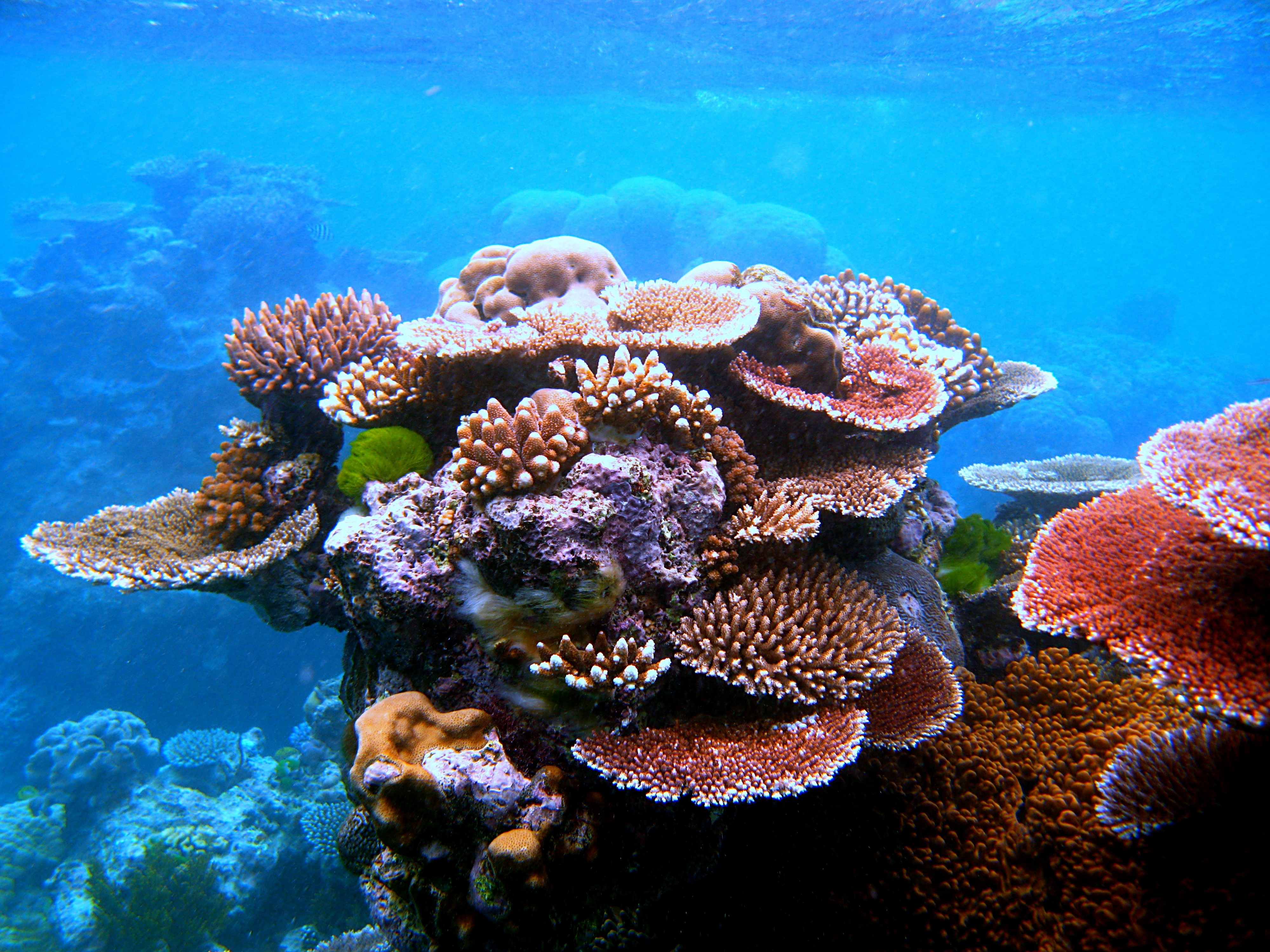
Anthozoa
Anthozoa is a class of marine invertebrates which includes the sea anemones, stony corals and soft corals. Adult anthozoans are almost all attached to the seabed, while their larvae can disperse as part of the plankton. The basic unit of the adult is the polyp; this consists of a cylindrical column topped by a disc with a central mouth surrounded by tentacles. Sea anemones are mostly solitary, but the majority of corals are colonial, being formed by the budding of new polyps from an original, founding individual. Colonies are strengthened by calcium carbonate and other materials and take various massive, plate-like, bushy or leafy forms.
Anthozoa is included within the phylum Cnidaria, which also includes the jellyfish, box jellies and parasitic Myxozoa and Polypodiozoa. The two main subclasses of Anthozoa are the Hexacorallia, members of which have six-fold symmetry and includes the stony corals, sea anemones, tube anemones and zoanthids; and the Octocorallia, which have eight-fold symmetry and includes the soft corals and gorgonians (sea pens, sea fans and sea whips), and sea pansies. The smaller subclass, Ceriantharia, consists of the tube-dwelling anemones. Some additional species are also included as incertae sedis until their exact taxonomic position can be ascertained.
Anthozoans are carnivores, catching prey with their tentacles. Many species supplement their energy needs by making use of photosynthetic single-celled algae that live within their tissues. These species live in shallow water and many are reef-builders. Other species lack the zooxanthellae and, having no need for well-lit areas, typically live in deep-water locations.
Unlike other members of this phylum, anthozoans do not have a medusa stage in their development. Instead, they release sperm and eggs into the water. After fertilisation, the planula larvae form part of the plankton. When fully developed, the larvae settle on the seabed and attach to the substrate, undergoing metamorphosis into polyps. Some anthozoans can also reproduce asexually through budding or by breaking in pieces.
Anthozoa is subdivided into three subclasses: Octocorallia, Hexacorallia and Ceriantharia, which form monophyletic groups and generally show differentiating reflections on symmetry of polyp structure for each subclass. The relationships within the subclasses are unresolved.[5]
Historically, the "Ceriantipatharia" was thought to be a separate subclass but, of the two orders it comprised, Antipatharia is now considered part of Hexacorallia and Ceriantharia is now considered an independent subclass. The extant orders are shown to the right.[5][6]
Hexacorallia includes coral reef builders: the stony corals (Scleractinia), sea anemones (Actiniaria), and zoanthids (Zoantharia). Genetic studies of ribosomal DNA has shown Ceriantharia to be a monophyletic group and the oldest, or basal, order among them.[7]
Classification according to the World Register of Marine Species:[8]
Octocorallia comprises the sea pens (Pennatulacea), soft corals (Alcyonacea), and blue coral (Helioporacea). Sea whips and sea fans, known as gorgonians, are part of Alcyonacea and historically were divided into separate orders.[6]
Ceriantharia comprises the related tube-dwelling anemones. Tube-dwelling anemones or cerianthids look very similar to sea anemones, but belong to an entirely different subclass of anthozoans. They are solitary, living buried in soft sediments. Tube anemones live and can withdraw into tubes, which are made of a fibrous material, which is made from secreted mucus and threads of nematocyst-like organelles, known as ptychocysts.[2]
Several extinct orders of corals from the Paleozoic era (~540–252 million years ago) are thought to be close to the ancestors of modern Scleractinia:[32][33]
These are all corals and correspond to the fossil record time line. With readily-preserved hard calcareous skeletons, they comprise the majority of Anthozoan fossils.